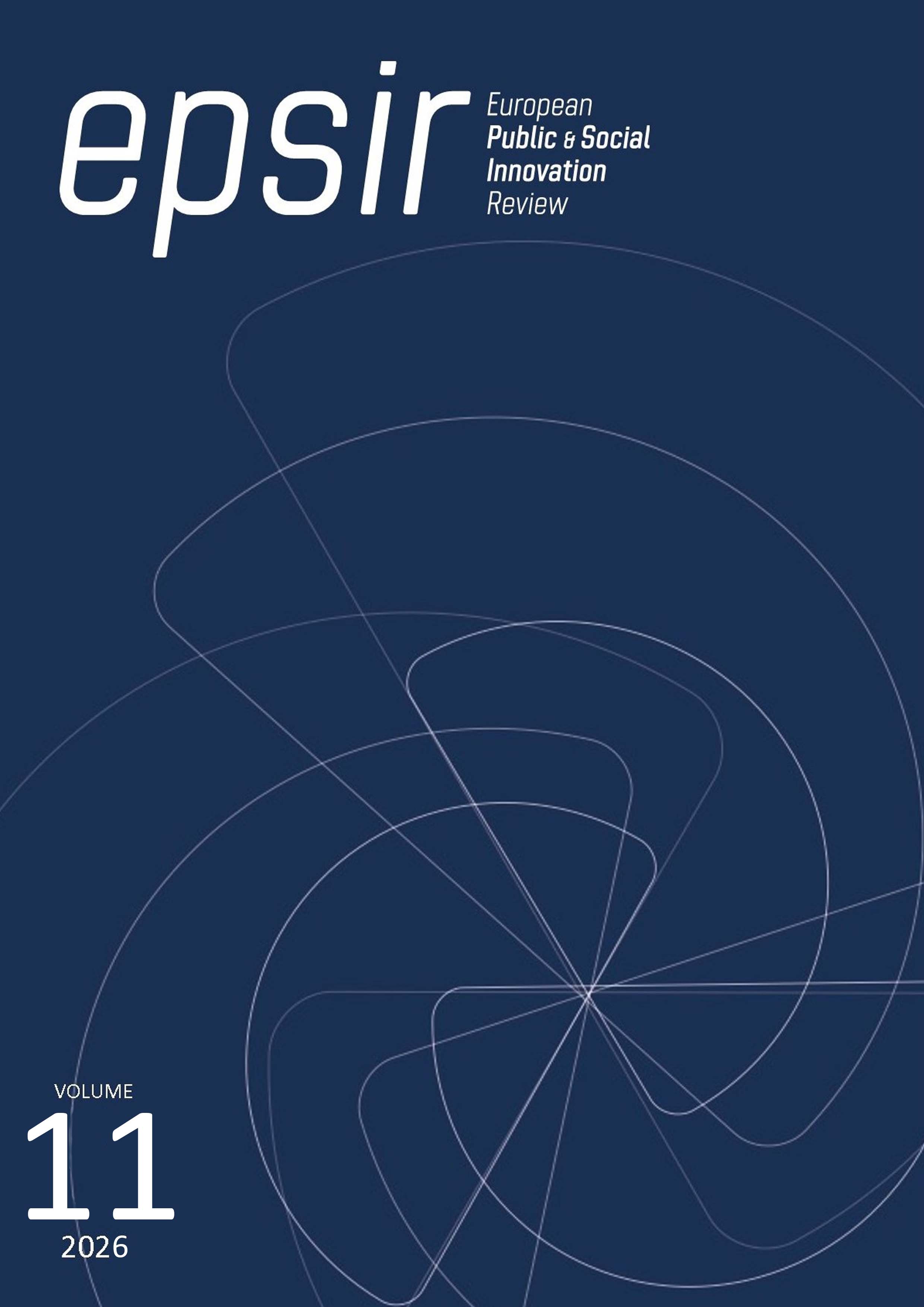Analysis of visual attention and emotional response in journalistic infographics using Neuromarketing techniques
DOI:
https://doi.org/10.31637/epsir-2026-2166Keywords:
infographic, visual journalism, neuromarketing, visual attention, emotional response, eye tracking, GSR, visual communicationAbstract
Introduction: Infographics have become an essential resource in visual journalism, as they facilitate the understanding of complex information through the coherent integration of text and image. In a digital environment marked by information overload and increasingly selective audience attention, a structured and narrative design becomes key to capturing the reader’s interest. Methodology: This study employed neuromarketing tools such as Eye Tracking and Galvanic Skin Response (GSR) to analyze the visual attention and emotional reaction of a sample of journalism students to journalistic infographics. Results: The data reveal that elements such as the use of color, clear visual hierarchy, and recognizable icons enhance visual fixation, while clean and balanced compositions generate stronger emotional activation. Discussion: These findings reinforce the importance of using information based on neuroscientific principles to improve the communicative effectiveness of infographics. The analysis also demonstrates how certain visual resources directly influence the audience’s experience. Conclusions: Incorporating neuromarketing techniques into infographic production allows for the optimization of their impact in digital media, fostering a more effective connection between journalistic content and its audiences.
Downloads
References
Albornoz Suárez, R. y Valenzuela Vargas, O. (2024). Los desafíos que imponen las nuevas audiencias para el diseño de contenidos en formato pódcast. European Public & Social Innovation Review, 9, 1-16. https://doi.org/10.31637/epsir-2024-773 DOI: https://doi.org/10.31637/epsir-2024-773
Aramburú Moncada, L. G., López Redondo, I. y López Hidalgo, A. (2023). Inteligencia artificial en RTVE al servicio de la España vacía. Proyecto de cobertura informativa con redacción automatizada para las elecciones municipales de 2023. Revista Latina de Comunicación Social, 81, 1-16. https://doi.org/10.4185/RLCS-2023-1550 DOI: https://doi.org/10.4185/RLCS-2023-1550
Balsebre-Torroja, A., Ortiz-Sobrino, M. A. y Soengas-Pérez, X. (2023). Radio crossmedia y radio híbrida: la nueva forma de informarse y entretenerse en el escenario digital. Revista Latina de Comunicación Social, 81, 17-39.
https://doi.org/10.4185/RLCS-2023-1848 DOI: https://doi.org/10.4185/RLCS-2023-1848
Barrientos-Báez, A. (2024). Desafíos del liderazgo: neuromarketing y publicidad [Neuromarketing and advertising: leadership challenges]. European Public & Social Innovation Review, 9, 01-15. https://doi.org/10.31637/epsir-2024-1569 DOI: https://doi.org/10.31637/epsir-2024-1569
Barrientos-Báez, A., Caldevilla-Domínguez, D. y Arteaga Ros, M. (2025a). Aplicación del neuromarketing y la neurocomunicación por las amas y amos de casa influencers. En Ubaldo Cuesta y Almudena Barrientos-Báez (Eds.), Neurocomunicación y neuromarketing: teorías y aplicaciones en la era digital. Fragua.
Barrientos-Báez, A., Carvajal Zaera, E. y Caldevilla-Domínguez, D. (2025b). Customer satisfaction and loyalty: The role of interaction and neuromarketing. Satisfacción y fidelización del cliente: el papel de la interacción y el neuromarketing. Visual Review. International Visual Culture Review//Revista Internacional de Cultura Visual, 17(3), 279-305. https://doi.org/10.62161/revvisual.v17.5817 DOI: https://doi.org/10.62161/revvisual.v17.5817
Brandín, J. A. y Barquero, J. D. (2024). La confiabilidad: el lugar donde la confianza de ego y la promesa de alter pueden encontrarse. Revista de Ciencias de la Comunicación e Información, 29. https://doi.org/10.35742/rcci.2024.29.e298 DOI: https://doi.org/10.35742/rcci.2024.29.e298
Brigas, J. (2020). Infografia das Guerras do Golfo e Iraque na Imprensa Ibérica. Independently published.
Caldevilla-Domínguez, D. (2010) Las Redes Sociales. Tipología, uso y consumo de las redes 2.0 en la sociedad digital actual. Documentación de las Ciencias de la Información, 33, 45-68. https://revistas.ucm.es/index.php/DCIN/article/view/DCIN1010110045A
Cordero, G., Alonso-Muñoz, L. y Casero-Ripollés, A. (2023). Créetelo o no. El rol de la ideología como predictor de la confianza en los medios convencionales y los medios sociales durante la COVID-19. Revista Latina de Comunicación Social, 82, 1-20. https://doi.org/10.4185/rlcs-2024-2141 DOI: https://doi.org/10.4185/rlcs-2024-2141
Cristófol-Rodríguez, C., Porras-Florido, C., Cerdá-Suárez, L. M. y Mocchi, B. (2024). Neuromarketing y moda: una revisión sistemática sobre sus implicaciones sensoriales. Revista de Ciencias de la Comunicación e Información, 29. https://doi.org/10.35742/rcci.2024.29.e304 DOI: https://doi.org/10.35742/rcci.2024.29.e304
Dávila Piñón, D. O., Rodríguez González, J. y Gutiérrez Hernández, R. (2024). Educación nutricional y redes sociales. Criterios en adolescentes de nivel medio superior para la selección de información alimentaria. Revista de Comunicación y Salud, 14, 1-18. https://doi.org/10.35669/rcys.2024.14.e346 DOI: https://doi.org/10.35669/rcys.2024.14.e346
Encinillas García, M. y Martín Sabarís, R. (2023). Desinformación y Salud en la era PRECOVID: Una revisión sistemática. Revista de Comunicación y Salud, 13, 1-15. https://doi.org/10.35669/rcys.2023.13.e312 DOI: https://doi.org/10.35669/rcys.2023.13.e312
Downloads
Published
How to Cite
Issue
Section
License
Copyright (c) 2025 Ana Isabel Beltrán-Valbuena

This work is licensed under a Creative Commons Attribution-NonCommercial-NoDerivatives 4.0 International License.
Authors who publish with this journal agree to the following terms:- Authors retain copyright and grant the journal right of first publication with the work simultaneously licensed under Creative Commons Non Commercial, No Derivatives Attribution 4.0. International (CC BY-NC-ND 4.0.), that allows others to share the work with an acknowledgement of the work's authorship and initial publication in this journal.
- Authors are able to enter into separate, additional contractual arrangements for the non-exclusive distribution of the journal's published version of the work (e.g., post it to an institutional repository or publish it in a book), with an acknowledgement of its initial publication in this journal.
- Authors are permitted and encouraged to post their work online (e.g., in institutional repositories or on their website) prior to and during the submission process, as it can lead to productive exchanges, as well as earlier and greater citation of published work (See The Effect of Open Access).



